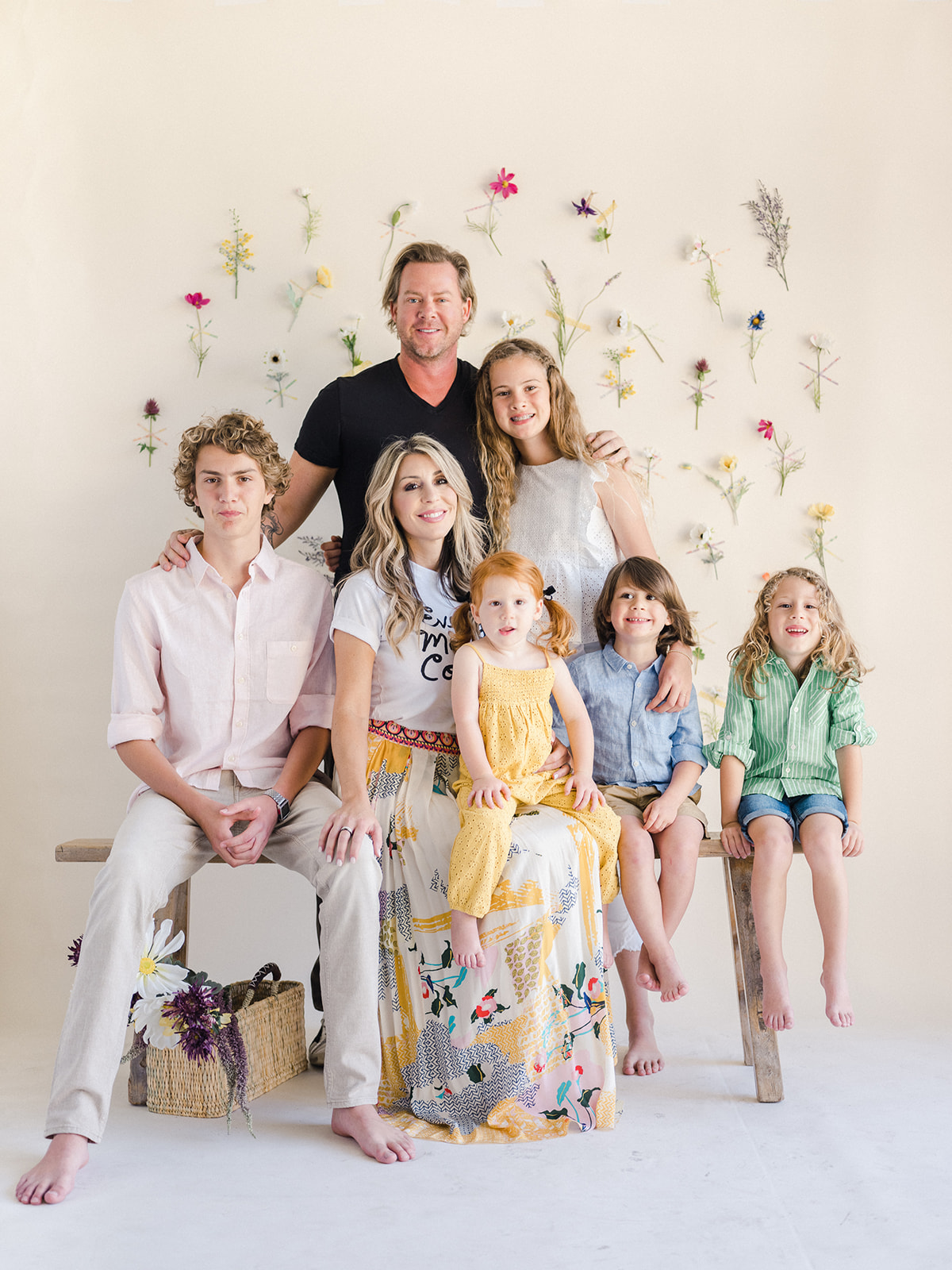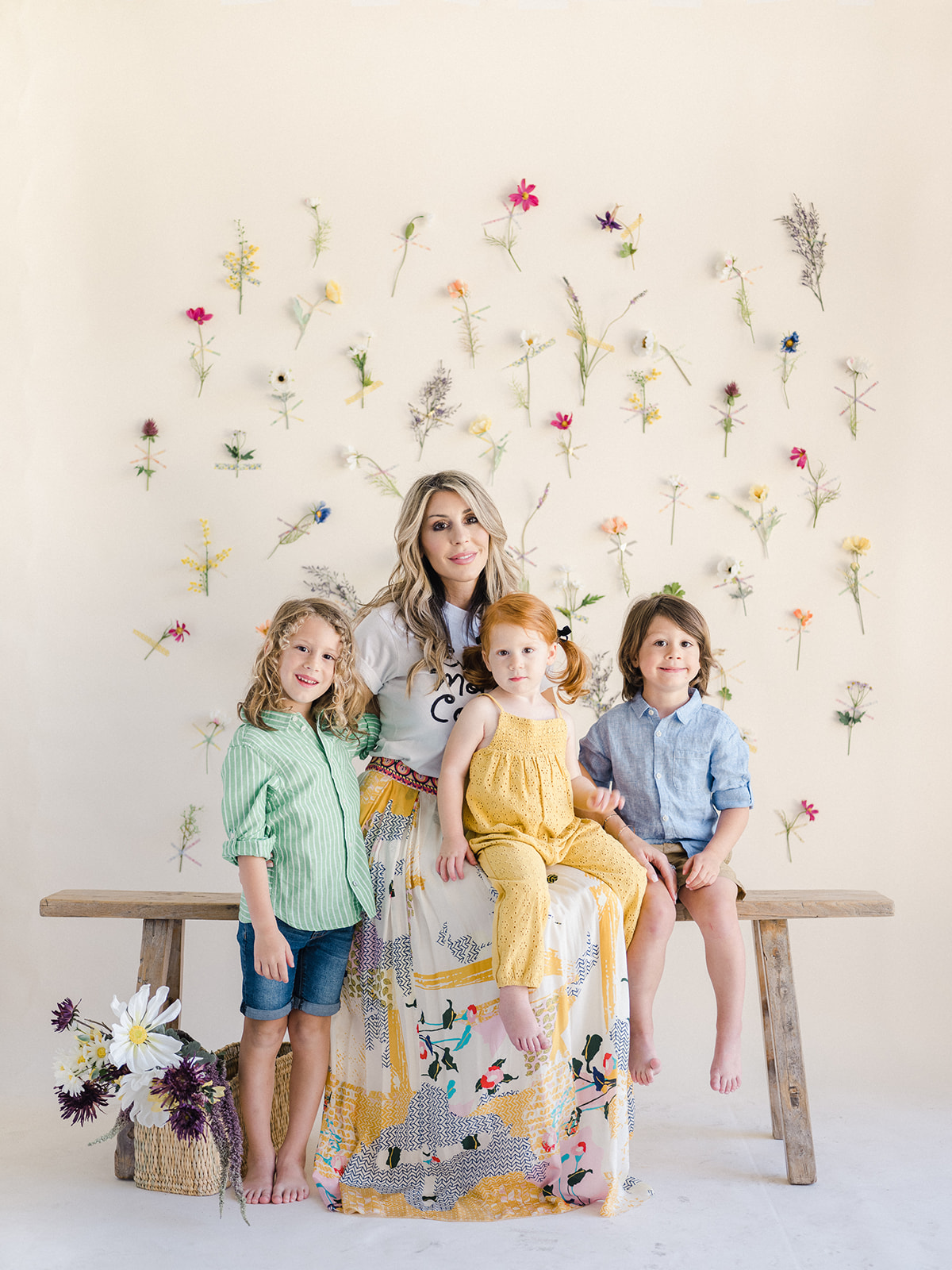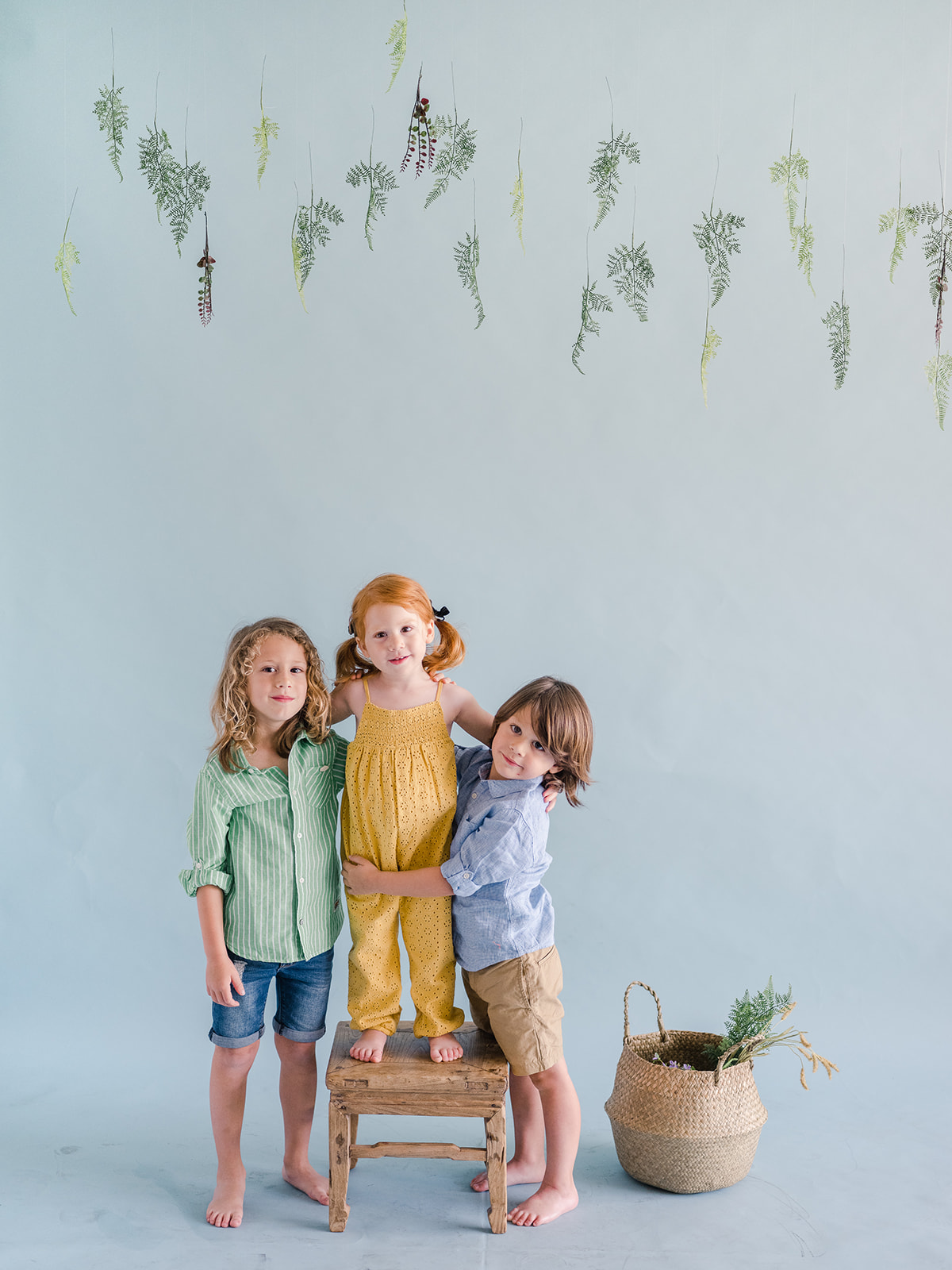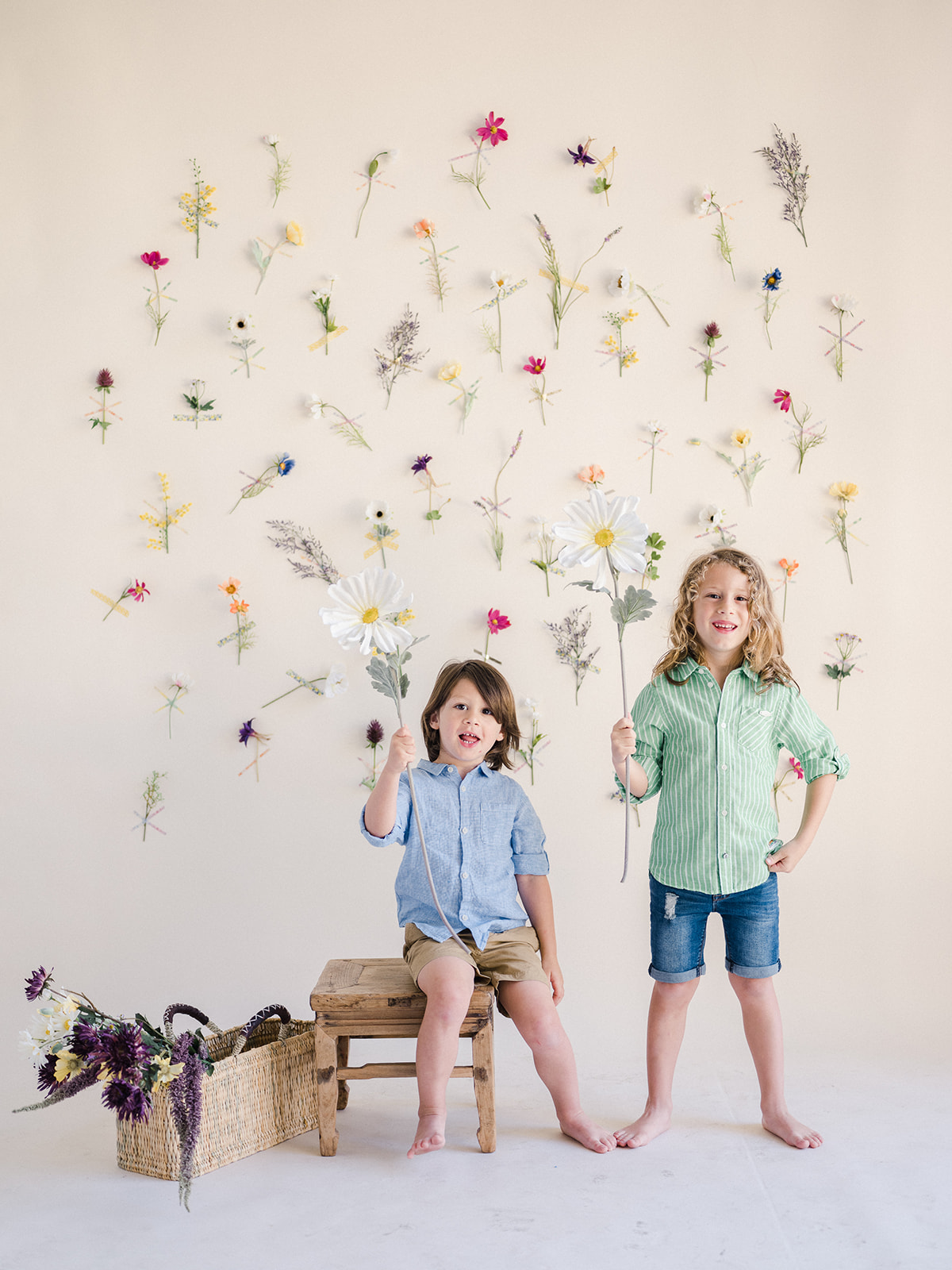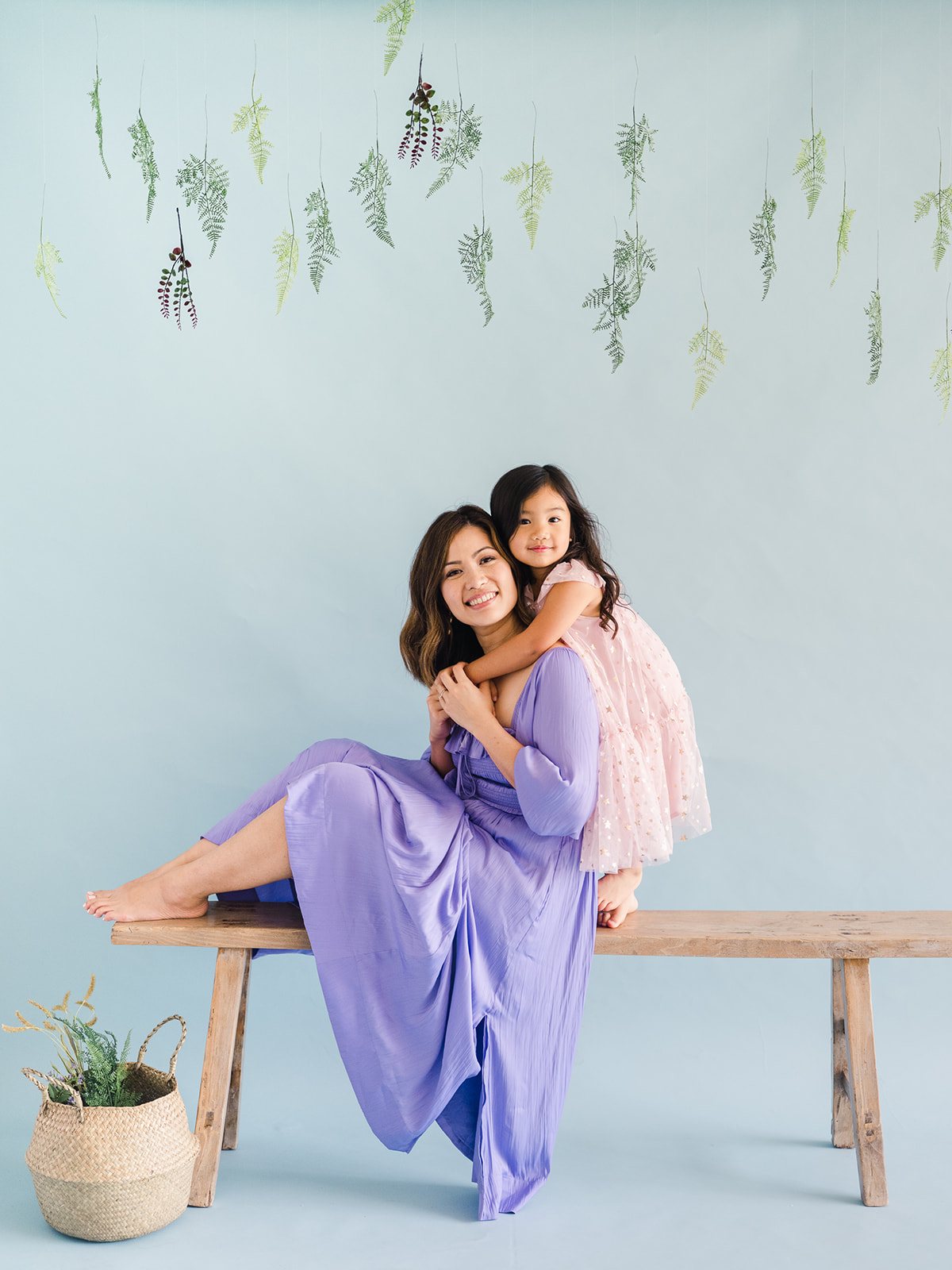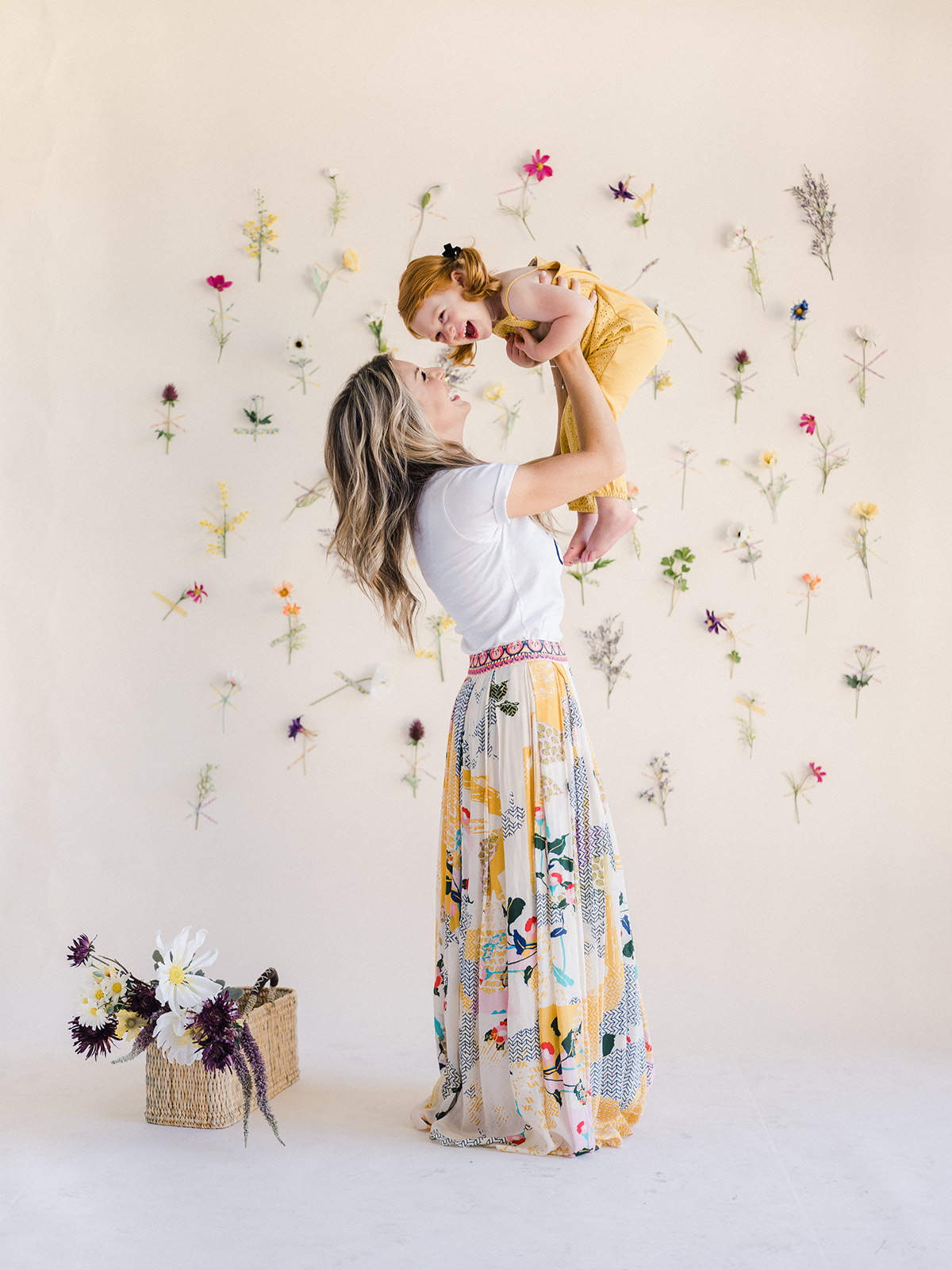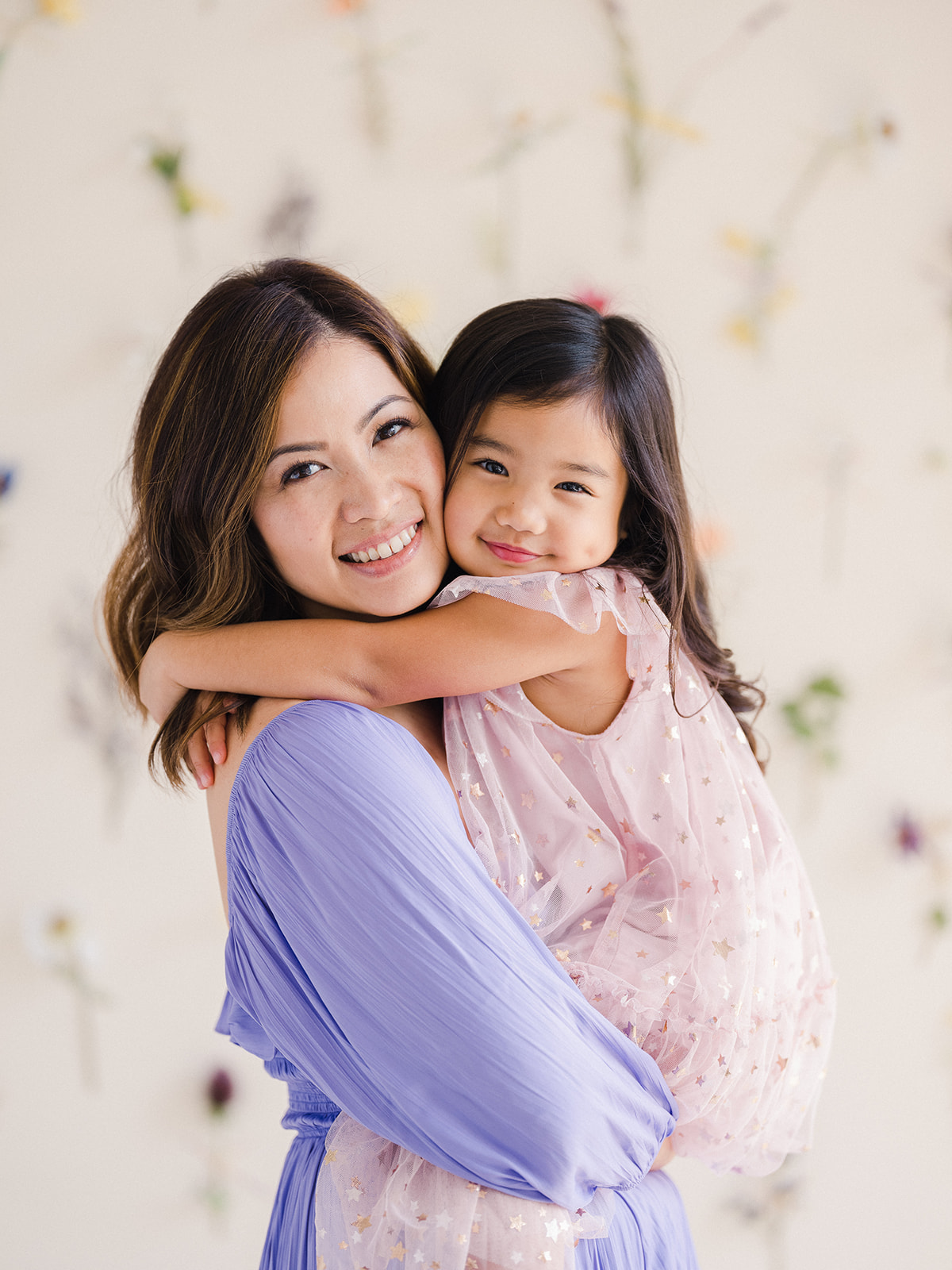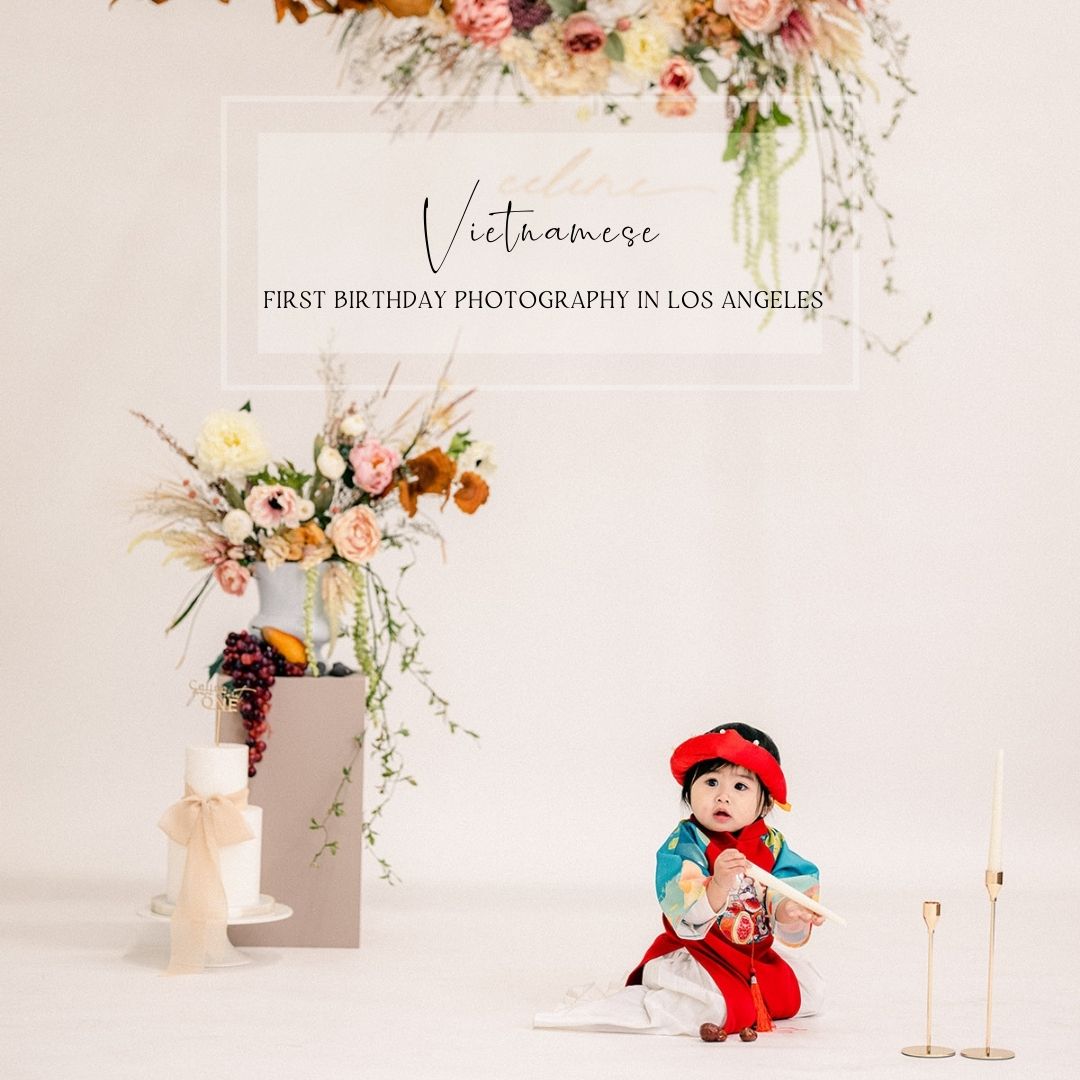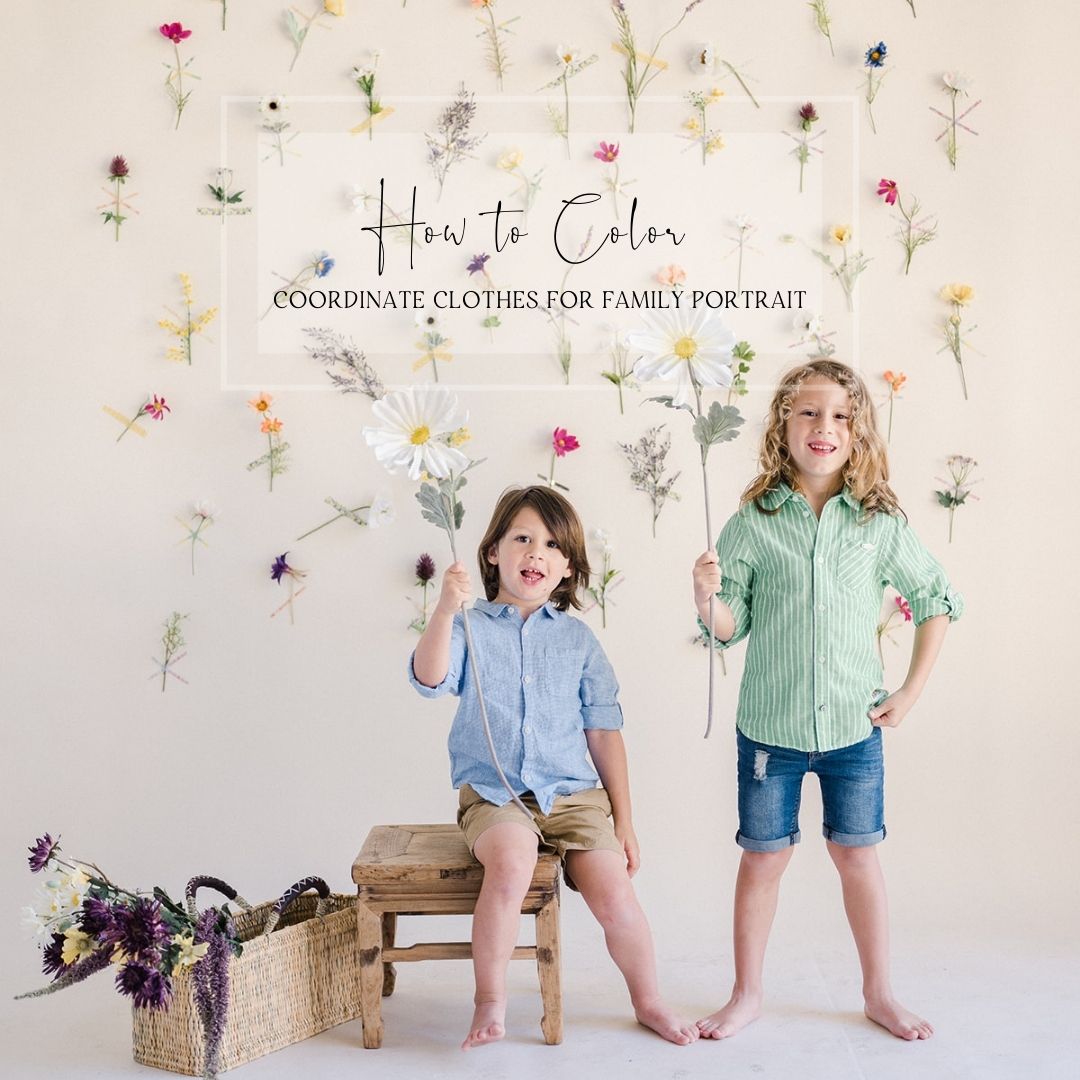
A common issue that comes up once clients have booked a family session is figuring out how to color coordinate clothes for family portrait photos. As someone who has done her fair share of shopping for clothes online, it’s a task that can take a bit of time to accomplish (um, returns, anyone?).
Unlike an engagement shoot, where you’re just trying to figure out clothing for two, family portraits will usually have you coordinating outfits for at least three people!
We’ve likely seen that matching family holiday pajamas were all the rage, but for family portraits, you generally want to go with colors that are complementary rather than exact matches.
An exception to that rule would be if you wanted to have matching outfits for a mommy and me session. If having a little mini you is the intent, then having the same outfit would be absolutely adorable!
But how do you ensure that your choices will photograph well? Here is how I guide my clients in figuring how to color coordinate clothes for their family portrait:
1. Start With Your "Star Piece"
Begin by choosing the article of clothing that most excites you. As a mom myself, I know that a lot of times we derive more joy from buying clothes for our children and brush aside our own needs.
I want to encourage you to use this opportunity to put yourself first and go for that piece that you’ve always wanted to add to your wardrobe! Check out Cheryl’s colorful skirt in one of our Motherhood Mini Sessions—it was so cheerful, whimsical, and allowed her to stand out even amongst her five adorable children!
2. Draw Color Inspiration From the “Star Piece”
Once you have your “star piece”, look to see what colors are present there and pick out a few that you want to incorporate in your family members’ outfits.
Using Cheryl’s skirt as an example, notice how she picked out yellow, green, blue, light pink, and cream and had them represented in her children’s tops.
You don’t necessarily need to reproduce every color that’s present, but building off of at least two colors will create a sense of cohesiveness for the overall image.
3. Make Sure the Colors Coordinate
Now for a little Color Theory 101! For photos, we want our colors to be harmonious rather than discordant.
We can create color harmony in several ways:
- Go monochromatic, which means using different shades of a single color (i.e. rose pink, blush pink, light pink, dark pink, etc.)
- Use analogous colors, which, if you look at a color wheel, are the two colors immediately adjacent to a specific color (i.e. purple, lavender, & pink - see sample photo below)
- If you want to be daring and include more contrast in your family portrait, try complementary colors, which means colors that are opposite to each other on the color wheel. Blue and orange, or purple and yellow, look vastly different from each other and seem like an unexpected pairing, but there are scientific reasons why they work well together (having to do with photoreceptor cells and light wavelengths, but we won’t get into that here). Choosing outfits with complementary colors ensures that your final images will pop in a way that is pleasing to the eye.
4. Take Some Test Shots
Once you have all your outfits on hand, either lay them out or have your family dress up and take a few test images using your phone. Many times, seeing a scene on camera reveals certain things that might not be clear in real life. You can trust that your photographer will have ideas for different poses and accessories to balance colors out during your session, but it will be helpful to see beforehand if there are any issues with how your chosen colors coordinate.
I hope this post helped to reassure you that figuring how to color coordinate clothes for family portraits doesn’t have to be complicated. We’re booking now for our annual Motherhood Mini Sessions, and I’m always available to shoot your legacy portrait photography or any family photos, so let’s get in touch!
Share this story
-
Pingback: Posing Prompts for Family Portraits - Caroline Tran | Los Angeles Wedding, Baby, & Branding Photographer
-
Pingback: What to Wear for Your Spring Family Photo Shoot - Caroline Tran | Los Angeles Wedding, Baby, & Branding Photographer
